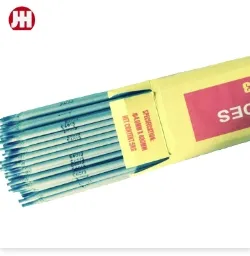Welding Electrodes: Types, Prices, and How to Choose the Right Supplier
Welding is the backbone of construction, fabrication, and manufacturing. Whether you’re building a skyscraper, assembling machinery, or maintaining infrastructure, the quality of your welds matters—and that starts with the right welding electrodes. From structural steel to stainless pipe, from manual stick welding to automated MIG and TIG systems, choosing the correct electrode directly affects weld strength, arc stability, deposition rate, and cost-efficiency.
If you're sourcing welding electrodes for sale, comparing welding rod prices, or searching for a reliable welding electrode company, this guide breaks down what you need to know: types, specs, price points, and what makes one supplier better than another.

What Are Welding Electrodes?
A welding electrode, also called a welding rod, is a metal wire or rod used to conduct current and melt during the welding process, forming a bond between metal workpieces. Depending on the welding process, electrodes can be:
Consumable: Melts during welding and becomes part of the weld (e.g., SMAW, GMAW).
Non-consumable: Does not melt, only conducts current (e.g., GTAW/TIG uses tungsten electrodes).
In shielded metal arc welding (SMAW), which uses stick electrodes, the rod is coated with a flux that protects the weld pool from atmospheric contamination and stabilizes the arc.
Types of Welding Electrodes
Understanding the different electrode classifications helps ensure optimal weld quality. Here are the most common types:
1. Mild Steel Electrodes (e.g., E6010, E6011, E6013, E7018)
E6010: Deep penetration, fast-freeze; great for pipe welding.
E6011: Similar to 6010 but AC compatible.
E6013: Smooth arc, minimal spatter; ideal for general-purpose welding.
E7018: Low-hydrogen, high-strength; commonly used in structural welding.
2. Stainless Steel Electrodes (e.g., E308L, E309L, E316L)
Designed for welding stainless alloys.
Flux coatings help control weld chemistry and corrosion resistance.
3. Cast Iron Electrodes
Nickel-based or iron-based; used for repair welding of cast iron parts.
4. Hardfacing Electrodes
Provide wear-resistant overlays on machinery or tools.
5. Aluminum and Other Specialty Electrodes
Require careful storage and application technique.
Each electrode is engineered for specific metals, positions, polarity, and weld characteristics. Always check the AWS classification when selecting a rod.
Welding Electrodes for Sale: What to Look For
If you're shopping for welding electrodes for sale, don’t just look at price. Consider the following:
AWS/ISO Classification: Ensure compliance with job or project specs.
Storage and Packaging: Are electrodes vacuum-packed or moisture-sealed? (especially for E7018)
Lot traceability: Needed for code welding and quality assurance.
Quantity Options: Can you buy by the kg, box, or pallet?
Technical support: Does the supplier help you select the right rod for your application?
Also check whether the supplier stocks electrodes for multiple processes: stick (SMAW), MIG (GMAW), TIG (GTAW), and flux-cored arc welding (FCAW).
Welding Electrode Company: How to Choose the Right Supplier
There are hundreds of manufacturers and distributors globally, but a reliable welding electrode company should offer:
Certifications: ISO 9001, AWS compliance, third-party testing.
Consistent quality: Uniform flux coating, low moisture pickup, minimal defects.
Good logistics: Fast delivery, bulk pricing, inventory transparency.
Application support: Weld procedure help, onsite demos, or lab testing.
Brand strength: Top names include ESAB, Lincoln Electric, Bohler, Kobelco, and Hyundai, but many regional companies offer competitive alternatives.
For project or production-level welding, supplier consistency matters more than low price alone.
Welding Rod Price: What Affects It?
Welding rod price varies based on:
|
Factor |
Impact on Price |
|
Material |
Mild steel rods are cheapest; nickel and stainless are more expensive. |
|
Size |
2.5mm, 3.2mm, 4.0mm rods have different rates per kg. |
|
Brand |
Premium brands cost more but often deliver higher consistency. |
|
Flux composition |
Low-hydrogen or special fluxes raise costs. |
|
Packaging |
Vacuum-sealed rods or special coatings may add to cost. |
|
Order size |
Buying in bulk (by pallet or ton) significantly reduces per-kg cost. |
Average Welding Electrode Prices (2025 Estimate):
|
Electrode Type |
Price (USD/kg) |
|
E6013 (general use) |
$1.80 – $2.80 |
|
E7018 (low hydrogen) |
$2.50 – $3.80 |
|
E308L (stainless steel) |
$4.50 – $7.00 |
|
Cast iron (nickel-based) |
$10.00 – $18.00 |
|
Hardfacing rods |
$6.00 – $15.00 |
Prices vary by supplier, country of origin, and packaging configuration.
Storage and Handling Tips
Low-hydrogen electrodes (like E7018) must be stored in dry conditions or rod ovens at 100–150°C to prevent moisture pickup.
Opened boxes should be used within 4 hours, or resealed.
Damaged flux or exposed wire can lead to weld defects.
For critical work, always check expiry dates and use fresh rods.
Welding Electrodes FAQs
Q1: What's the difference between E6013 and E7018?
A: E6013 is a general-purpose electrode with easy slag removal and smooth arc. E7018 is a low-hydrogen electrode designed for stronger welds, less cracking, and structural code work.
Q2: Can I use welding electrodes on AC and DC machines?
A: Yes, but not all rods are compatible. For example, E6010 is DC-only, while E6011 works on both AC and DC.
Q3: What's the shelf life of welding electrodes?
A: Sealed electrodes can last over 2 years. Once opened, low-hydrogen rods should be used quickly or reconditioned.
Q4: Where can I find welding electrodes for sale near me?
A: Check with local welding supply stores, industrial distributors, or authorized dealers of major brands. Many suppliers now sell directly online.
Q5: How do I get the best welding rod price?
A: Buy in bulk, choose local brands with good quality control, and compare technical performance—not just cost per kg.
-
What is a medium-frequency pulse? What types of welding are suitable for?NewsNov.24,2025
-
Why is the overall cost of CO2 welding lower than that of shielded metal arc welding?NewsNov.21,2025
-
Welding Knowledge 6NewsNov.20,2025
-
What is a low-frequency pulse? What types of welding are they suitable for?NewsNov.19,2025
-
Why are the weld joints from CO₂ gas shielded welding of such high quality?NewsNov.18,2025
-
J506 Welding Rod - Low Hydrogen, All-Position, AC/DC E7016NewsNov.17,2025


